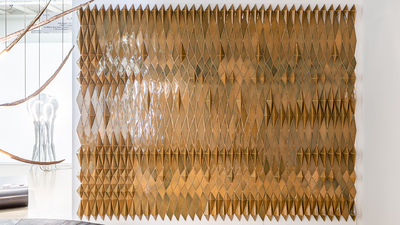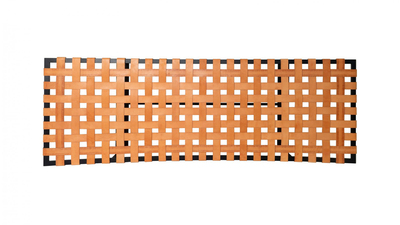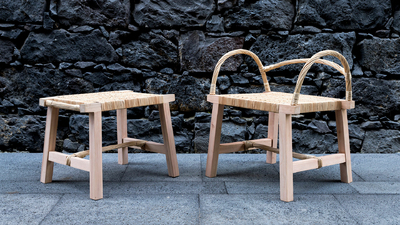Sea Level
The new hall, on the east wing of the main building and former Baggage Room was to become the main passenger Hall after the intervention in 2010.
This new interior space, originally only one-storey high and housing secondary functions now gains a greater volume and importance in the new station. With it´s new high ceilings, now finished in traditional Portuguese glazed ceramic tiles (both on the ceiling and columns), the Hall now houses the stairs and escalators that connects the Underground to the Station and directs commuters toward the boats.
The support structure for this ceramic tile intervention is the ceiling and group of 8 columns of the new station´s atrium. The intention is to have the intervention develop inseparable from the space integrating completely with the Architecture but simultaneously stands out and reinforces it. The ceiling measuring 17m x 23 m stops short of the walls. It has a floor to ceiling height of 5.6 m and is supported by 8 columns of 60 cm diameter. The tiles are extruded and the surface of those used on the columns follows it´s curvature. 20 tones of monochromatic tiles, developed and produced with Fábrica de Cerâmica Viúva Lamego, are used ranging from white to black with a range of blues in between. It is through the chromatic variation of this material that the optical effect is reached. Over the ceramic surface of the ceiling a drawing emerges that emulates an image of the surface of water. Circular patterns are generated around the columns. From this relationship/reflexion a virtual space is created, placing the spectator in a new position.
In this Hall those leaving the city southbound cross paths with those arriving by boat, having crossed the river. Change exists here: of transportation – River to Underground – of Elements – Water to Ground – and of Level – from Sea Level to Ground Level, that in this case is negative.
The tiles used mirror this change literally and metaphorically. Metaphorically when they represent the ripple effect, in a non concentric manner, in order to increase the sensation of movement of water, from where the commuters and columns enter and exit; but also literally as the glazed surface of the tile reflects the flux of commuters.





















































































